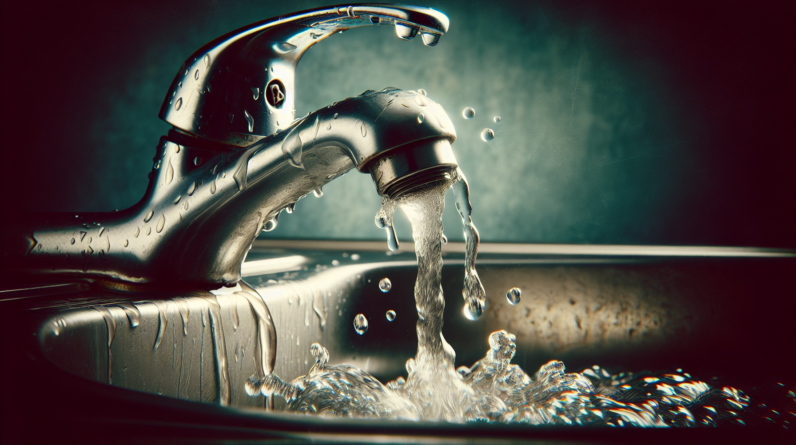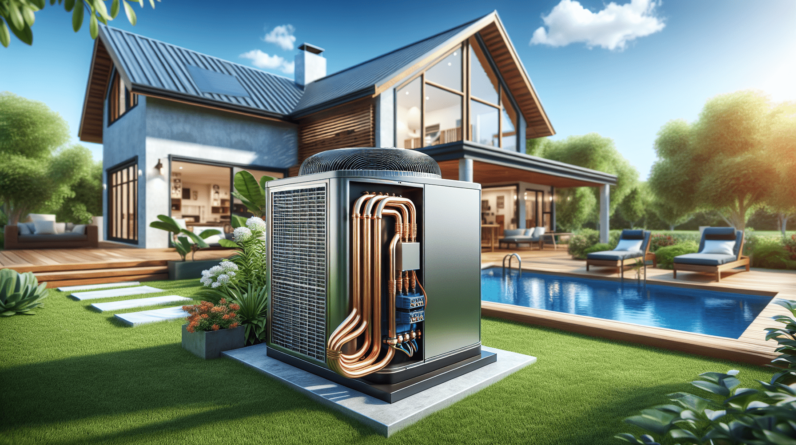

Imagine waking up one morning to discover water seeping into your home. The sight of damp walls and soggy floors can be incredibly distressing. But fear not, because in this article, we will explore the various methods to fix water intrusion. Whether it’s from a leaky roof, a broken pipe, or even a flooded basement, we’ve got you covered. From simple DIY solutions to hiring professional help, we will guide you step by step to effectively resolve this annoying problem and restore your home to its dry and comfortable state. So, let’s dive right in and tackle water intrusion head-on!
Identifying the Source of Water Intrusion
When it comes to addressing water intrusion issues in your home or building, the first step is identifying the source of the problem. This requires a thorough examination of the exterior of the property. Look for any signs of water damage, such as discoloration or peeling paint on the walls, as these can indicate where water is entering. Inspect the roof for missing or damaged shingles, as well as any leaks around chimneys and vents. Check the gutters and downspouts for clogs or damage that may be causing water to overflow. Finally, assess the foundation for any cracks or gaps where water could be seeping in.
Repairing Exterior Water Intrusion
Once you have identified the source of water intrusion on the exterior, it’s time to start repairing the damage. This may involve fixing cracks in the walls, which can be done by applying a waterproof sealant or patching compound. If you have damaged or missing siding, it will need to be replaced to keep water from infiltrating further. Additionally, caulking and sealing any gaps or joints in the exterior can prevent water from finding its way inside.
Addressing Roof Related Water Intrusion
A major source of water intrusion can often be found in the roof. If you notice damaged shingles, they should be repaired or replaced promptly to prevent further water damage. Leaks around chimneys and vents can be fixed by applying roofing cement or flashing to create a watertight seal. It’s also important to unclog and repair gutters and downspouts regularly to ensure proper drainage. Installing proper flashing around roof edges, chimneys, and vent pipes can help divert water away from vulnerable areas.
Managing Water Intrusion through Windows and Doors
Windows and doors can also be susceptible to water intrusion if not properly maintained. Start by inspecting and repairing any damaged window frames, as cracks or gaps can allow water to seep in. Sealing gaps around windows and doors with weatherstripping can create a tight seal and prevent water infiltration. If you notice faulty weatherstripping, it’s important to replace it to maintain the integrity of the seal.
Dealing with Foundation Water Intrusion
Foundation cracks can be a significant cause of water intrusion, so it’s crucial to address them promptly. Depending on the size and severity of the cracks, repairs may range from using epoxy injections to filling them with hydraulic cement. Installing and maintaining a proper drainage system around the foundation can prevent water from pooling around the property, further reducing the risk of water intrusion. Waterproofing techniques, such as applying a waterproof membrane, can also be effective in keeping water out.
Fixing Basement Water Intrusion
Basements are particularly vulnerable to water intrusion, and proper repair is essential to prevent structural damage and mold growth. Evaluating and repairing foundation issues, such as cracks and gaps, can help eliminate potential entry points for water. Ensuring adequate interior drainage by installing a sump pump system or French drain can help divert water away from the basement. Additionally, waterproofing the interior surfaces, such as walls and floors, with coatings or sealants can provide an extra layer of protection.
Mitigating Water Intrusion in Crawl Spaces
Crawl spaces are often overlooked but can be a common entry point for water. Inspecting and repairing foundation vents is crucial to prevent excess moisture from entering. Sealing gaps and cracks in the crawl space can also keep water out. Installing vapor barriers, such as plastic sheeting, can help create a moisture barrier between the ground and the crawl space, reducing the risk of water intrusion.
Preventing Water Intrusion in Attics
Attics can experience water intrusion due to roof leaks or inadequate ventilation. Addressing roof leaks promptly is essential to prevent water from seeping into the attic and causing damage. Proper ventilation and insulation in the attic can help regulate temperature and humidity levels, reducing the risk of condensation and potential water damage. Installing attic fans can also help promote air circulation and prevent moisture buildup.
Removing and Drying Water Damage
In the unfortunate event of water intrusion, it’s crucial to remove any standing water as soon as possible. This can be done using pumps or wet/dry vacuums to extract the water from the affected areas. Afterward, thorough drying is necessary to prevent further damage and the growth of mold and mildew. Utilizing dehumidifiers can help remove excess moisture from the air, while using air movers and fans can facilitate the drying process by increasing air circulation.
Seeking Professional Assistance
While many water intrusion issues can be addressed with some DIY know-how, it’s important to recognize when professional assistance may be necessary. Knowledgeable water intrusion specialists can conduct a comprehensive assessment of your property and provide expert advice on the best course of action. Consulting with contractors, such as roofers or foundation experts, can also be beneficial in determining the most effective repairs. In cases of significant water damage, hiring qualified water damage restoration services can ensure thorough remediation and minimize the risk of further issues.
By following these steps and addressing water intrusion in a timely manner, you can protect your property from costly damages and maintain a safe and healthy living environment. Remember, prevention is key, so regular inspection and maintenance of your home’s exterior and essential systems can help mitigate potential water intrusion risks.






